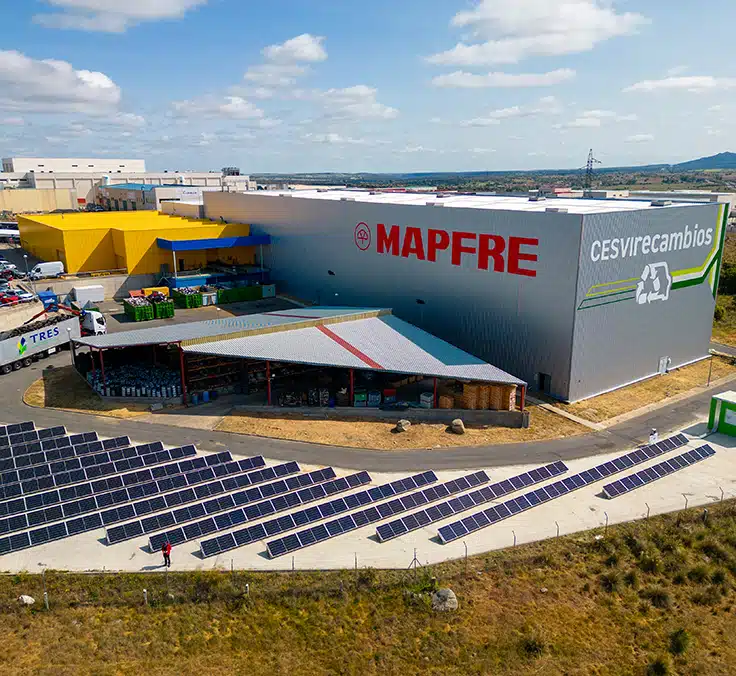SUSTAINABILITY | 03.24.2025
The green potential of discarded cars

Carmen Toro
Cars typically have a service life of 13 to 14 years, with 85% to 90% of their materials being recyclable and about 10% available for use as an energy source. However, many users are unaware of this when the end comes, and the vehicles are sent to scrapyards.
You’ve probably never considered how many lives a car can have. When you see them speeding down the road, it’s hard to grasp that cars are essentially a collection of expertly assembled parts designed to serve a functional purpose: to take us from point A to point B. However, when vehicles break down or reach a certain age, they are typically sent to scrapyards. In reality, each part and material used in their construction can be recycled and repurposed for new creations. There is life for cars beyond the scrapyard, adhering to the principles of the 3Rs: reduce, reuse, and recycle.
A vehicle is composed of over 4,000 parts, along with fuel, oils, and other fluids necessary for proper operation. The materials used in manufacturing range from various metals in the body and rubber in the tires to plastics in the bumpers and glass in the windows.
What happens to all these components when a car reaches the end of its service life? Commonly, they end up in the scrapyard once a vehicle has reached 300,000 and 500,000 kilometers or its average lifespan of 13 to 14 years. However, since 2015, European legislation mandates that 95% of a vehicle must be recycled.
How to recycle a car
Each year, 27 million cars that have reached the end of their service life are recycled worldwide and sent to scrapyards, also known as authorized processing centers. In these centers, technicians remove and sell or reuse usable parts, such as starter motors, alternators, EGR valves, headlights, and much more, before the cars are turned into scrap.
In Spain, one of these authorized processing centers for end-of-life vehicles is CESVIrecambios, part of CESVIMAP (MAPFRE Road Safety and Experimentation Center). For over 20 years, this center has received thousands of vehicle parts from scrapyards for resale to workshops and private individuals. Last year alone, CESVIrecambios recovered 673 tons of parts from damaged vehicles, which were reused after processing 1,887 vehicles in Spain.
Once the vehicle is cleaned and dismantled, the first step is to organize the parts based on their potential for reuse. The metal skeleton remaining after disassembly has its metallic components separated using magnets, as nearly 70% of a car’s composition is ferrous material. Aluminum, copper, and bronze, which are also part of the car’s composition, are sent to other foundries. These materials undergo a smelting process that enables them to be repurposed into new items such as washing machines, bicycles, bottles, and windows.
The components of cars can be reused in new vehicles or transformed into other products like appliances, swings, shopping carts, and even asphalt and artificial grass in the case of tires.
Additionally, centers like CESVIMAP conduct low-speed crash tests on over 800 vehicles to assess their damage and identify sustainable repair methods that minimize waste generation.
What to do with hazardous waste from cars
Cars generate waste materials that can be classified as “hazardous”, including oils, fuels, oil filters, and batteries. Proper handling of these materials is essential and is part of the vehicle “decontamination” process. For oils, those harmful to the ozone layer are destroyed, while non-hazardous oils are extracted, purified, and reused. Liquids can be purified and reused as new fuels or oils, while those that cannot be recycled are disposed of in specialized containers.
Regarding batteries, the acid they contain must be separated for either reuse or safe disposal, and the plates and plastics are also recycled. At CESVIMAP, they utilize second-hand electric vehicle batteries to store energy generated by their self-consumption photovoltaic plant in Ávila. This initiative has produced 75 MWh of photovoltaic energy, increasing renewable energy generation by 21%.
By recycling these types of vehicle parts and waste, we can create new replacement components or recycle materials. This reduces pollution and the carbon footprint, eliminates mass production of parts, and lowers the demand for raw materials like cotton, linen, and leather used in automotive textiles, such as seat upholstery and carpets.
These efforts lead to eco-friendly replacements for our vehicles, resulting in significant savings and promoting a circular and sustainable economy that benefits environmental health.
RELATED ARTICLES:



